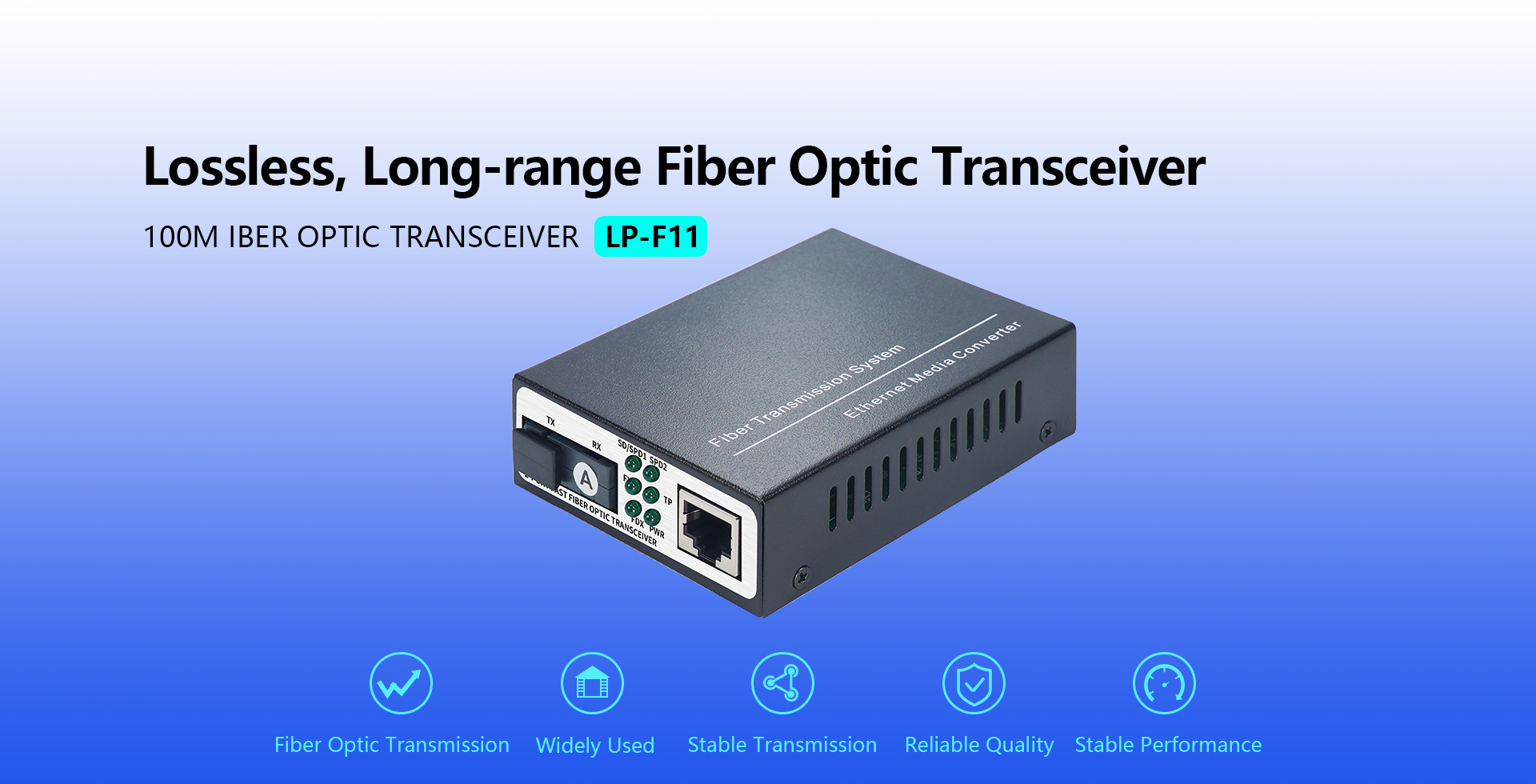Entendendo os transceptores de fibra óptica: Um guia para iniciantes

Fiber optic transceivers are essential components in modern data communication networks. They play a crucial role in providing reliable and high-speed data transmission between network devices. Understanding how fiber optic transceivers work is important, whether you are a beginner or an experienced professional working with these devices. In this beginner’s guide, we will explore the basics of fiber optic transceivers, how they work, the different types available, and their applications.
What are Fiber Optic Transceivers?
Fiber optic transceivers, also known as fiber optic transmitters and receivers, are electronic devices that convert electrical signals into light signals and vice versa. They are used in fiber optic communication systems to transmit and receive data over optical fibers. These devices are crucial in modern telecommunications, networking, and broadcasting systems, enabling the transmission of large amounts of data at high speeds and over long distances.
How do Fiber Optic Transceivers Work?
Fiber optic transceivers utilize a combination of electrical and optical signals to transmit data. The process begins with the transceiver receiving electrical signals from a computer or network device’s copper media interface, such as a network interface card (NIC). These electrical signals are then converted into optical signals using a laser diode or light-emitting diode (LED). The intensity of the light signals is modulated to represent data, and then sent over the fiber optic cable.
On the other end of the fiber optic link, the receiving transceiver decodes the modulated light signals back into electrical signals, which are then received by the network device. This process is repeated in both directions, enabling two-way communication between network devices.
Types of Fiber Optic Transceivers
There are several types of fiber optic transceivers available in the market, each with its own specific characteristics and applications. Here are some of the most commonly used types:
- Small Form-factor Pluggable (SFP) Transceivers
SFP transceivers are compact and hot-swappable devices that support data rates of up to 10Gbps. They are commonly used for short-distance communications, such as within a data center. - Quad Small Form-factor Pluggable (QSFP) Transceivers
QSFP transceivers are larger than SFP transceivers and can support data rates of up to 100Gbps. They are used for high-speed data transmission over short and long distances in networking and telecommunications applications. - XFP Transceivers
XFP transceivers are similar to SFP transceivers in size and shape but can support data rates of up to 40Gbps. They are commonly used in high-speed network switches, routers, and other devices. - CFP Transceivers
CFP transceivers are much larger than SFP, QSFP, and XFP transceivers and can support data rates of up to 100Gbps. They are used in high-speed and long-distance applications, such as in long-haul telecommunications systems. - GBIC Transceivers
GBIC transceivers are larger than SFP transceivers and can support data rates of up to 1Gbps. They are commonly used in older networking devices and are gradually being replaced by smaller and more advanced transceiver types.
Applications of Fiber Optic Transceivers
The use of fiber optic transceivers is not limited to just one industry or application. These devices are used in a wide range of fields, including telecommunications, data networking, video broadcasting, and more.
Some of the common applications of fiber optic transceivers include:
- Local Area Networks (LAN): Fiber optic transceivers are used in LANs to connect network devices such as computers, switches, routers, and servers.
- Wide Area Networks (WAN): Fiber optic transceivers are used in WANs to connect geographically dispersed networks.
- Telecommunication Systems: Fiber optic transceivers are used in telecommunication systems for long-distance data transmission and communication.
- Video Broadcasting: Fiber optic transceivers are used for transmitting high-quality video signals in television broadcasting and other video applications.
Benefits of Using Fiber Optic Transceivers
There are several advantages to using fiber optic transceivers in data communication networks, including:
- High-Speed Data Transmission
Fiber optic transceivers can support high-speed data transmission at rates of up to 100Gbps. This makes them ideal for applications where large amounts of data need to be transmitted quickly and efficiently. - Low Power Consumption
Compared to copper-based networking devices, fiber optic transceivers consume less power. This makes them more energy-efficient and cost-effective in the long run. - Immune to Electromagnetic Interference
Fiber optic transceivers use light signals for data transmission, making them immune to electromagnetic interference. This allows for a more reliable and stable data connection. - Long-Distance Data Transmission
Fiber optic transceivers can transmit data over long distances without losing signal strength. This makes them ideal for telecommunications and other applications that require data transmission over long distances.
Fiber optic transceivers are an integral part of modern data communication networks. These small but powerful devices enable high-speed and reliable data transmission between network devices over long distances. With the ever-increasing demand for faster and more efficient data transmission, the use of fiber optic transceivers is expected to grow even more in the years to come. We hope this beginner’s guide has helped you understand the basics of fiber optic transceivers and their importance in modern data communication networks.
